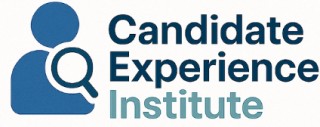
The Role of Total Rewards in Candidate Experience
The Influence of Total Rewards on Job Applicants
In the competitive world of job recruitment, companies are increasingly focusing on their total rewards strategy to boost their candidate experience. Offering a comprehensive understanding of rewards and benefits is crucial in attracting and retaining top talent. Total rewards encompass not just direct compensation like salary or pay but also includes a range of diverse components such as employee benefits, health insurance programs, and long-term rewards.
By providing a transparent and detailed rewards statement, organizations can effectively communicate the full value of their compensation package. Rewards statements elaborate on the total compensation, revealing not just the base salary but also the various layers of the rewards package. Such clarity helps employees and potential candidates grasp the full spectrum of what a company offers beyond traditional pay.
While the immediate impact of having an appealing rewards total and enticing compensation benefits is evident, the long term vision also plays a significant role. A well-articulated total rewards package can enhance job applicants' experience by helping them make informed decisions about their career journey. It creates an environment where candidates feel valued even before they decide to join, as they understand how the company supports their financial and personal growth.
For additional insights, you might want to examine strategies on how companies adapt to evolving recruitment landscapes by exploring options like temporary job shifts here in the recruitment industry.
Components of a Total Rewards Statement
Key Elements in a Reward Overview
Understanding the anatomy of a comprehensive total rewards statement is crucial for both employees and employers. It encompasses various components, each designed to provide a detailed account of what an employee receives beyond just their base salary. A well-structured rewards package not only highlights monetary incentives but also emphasizes the overall compensation value employees contribute to and receive from their company.
One of the primary elements of a total rewards statement is the compensation segment. This includes an employee's base salary, any variable pay such as bonuses or commissions, and long-term incentives. It's important for these figures to be clearly broken down, as they often form the backbone of an employee's financial rewards.
Another critical section is employee benefits. This extends beyond health insurance to cover retirement plans, wellness programs, paid time off, and other benefits that contribute to an employee's overall well-being. Highlighting these health and financial rewards can significantly enhance the perceived value of an employee’s compensation package.
Moreover, non-financial rewards form an integral part of the statement. These may involve access to career development opportunities, flexible working arrangements, recognition programs, and other elements that recognize the employee's contribution. Paying attention to these areas ensures that the company’s investment in its employees aligns meaningfully with their needs and aspirations.
Collectively, a comprehensive view of these components offers a transparent look at what an employee gains from their company. In addition to serving as an informative tool, a well-presented rewards statement can effectively support candidate engagement strategies, underscoring the organization’s commitment to its workforce in ways that are vital to future talent acquisition and retention efforts.
How Total Rewards Statements Influence Job Decisions
Impact on Job Selection and Attraction
When weighing job offers, candidates often look beyond the base salary to evaluate the full rewards package. This is where a comprehensive understanding of "total rewards statements" makes a significant impact. By providing access to detailed breakdowns of compensation, benefits, and other incentives, these statements empower potential employees to make informed decisions. Candidates are more inclined to accept positions when they can clearly see the long term value of both financial and non-financial rewards the company offers. These include not only health insurance and retirement plans but also unique employee benefits like professional development programs and wellness initiatives. When total compensation is transparently communicated, it boosts a company’s ability to attract top talent. Moreover, well-crafted "reward statements" emphasize how a role supports both personal and professional growth through tailored rewards strategies. By aligning the "rewards statement" with individual goals, employers showcase their commitment to employee well-being. This personalized approach significantly enhances job appeal and can be a deciding factor for candidates evaluating similar roles. For more insights on how candidates navigate their career opportunities, consider this guide to career fairs, which highlights how comprehensive total rewards can play a key role in candidate decisions. In conclusion, total rewards statements hold significant weight in a candidate's decision-making process. By transparently articulating both the tangible and intangible benefits, companies not only attract talent but also set the stage for long-term employee satisfaction and loyalty.Creating an Effective Total Rewards Statement
Crafting a Clear and Comprehensive Statement
Creating an effective total rewards statement involves more than just listing numbers and benefits. It requires a strategic approach that aligns with the company's overall rewards strategy and clearly communicates the value of the compensation package to employees. A well-crafted statement can significantly enhance the candidate experience by providing transparency and clarity.
Key Elements to Include
- Base Salary: Clearly state the employee's base salary, as it forms the foundation of the total compensation package.
- Benefits: Detail the employee benefits, including health insurance, retirement plans, and any other health-related programs.
- Financial Rewards: Include bonuses, commissions, and any other financial incentives that contribute to the total rewards.
- Long-Term Incentives: Outline any long-term rewards, such as stock options or profit-sharing plans, that align with the company's long-term goals.
- Time Off: Provide information on vacation days, sick leave, and any other time-off policies.
Utilizing Data for Personalization
Personalizing the rewards statement by leveraging data can help employees see how their compensation benefits align with their personal and professional goals. This personalization can be achieved by providing employees with access to an online portal where they can view and manage their rewards package.
Ensuring Clarity and Accessibility
To maximize the impact of the rewards statement, it should be easy to understand and accessible. Use clear language and avoid jargon to ensure that all employees, regardless of their familiarity with compensation benefits, can grasp the information. Additionally, providing digital access to the statement total can help employees review their rewards package at their convenience.
Regular Updates and Communication
Regularly updating the rewards statements and maintaining open communication with employees about any changes in their compensation package is crucial. This transparency not only builds trust but also reinforces the company's commitment to its employees' well-being and satisfaction.
Challenges in Communicating Total Rewards
Efficiently Conveying Total Rewards Information
Communicating total rewards can be daunting for organizations aiming to provide a clear and concise overview of their compensation packages. It's essential to ensure that employees fully understand the comprehensive array of rewards available to them. Here are some challenges to consider:- Complexity of Information: Total rewards statements often encompass a variety of elements, including base salary, employee benefits, health insurance, and long-term reward programs. The intricate nature of these packages can make it difficult for employees to fully grasp all components.
- Varied Employee Needs: Employees value different aspects of their total compensation package. For some, health benefits take precedence, while others may prioritize financial rewards or time-off programs. Communicating a one-size-fits-all rewards statement can lead to misunderstandings.
- Data Access and Transparency: Providing reliable data on compensation benefits is a challenge. Employees need assurance that the information presented in their rewards statement is accurate and up-to-date, enhancing trust in the company.
- Engagement and Understanding: Merely handing out rewards statements isn't sufficient. Companies must engage employees in understanding their total compensation, perhaps through interactive sessions or personalized digital portals that help employees break down the elements of their rewards package.













